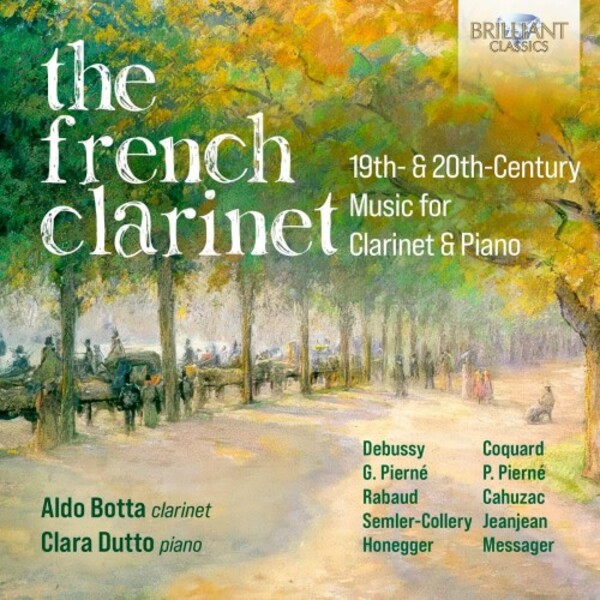
The French Clarinet: 19th- & 20th-Century Music for Clarinet & Piano
£9.45
In stock - available for despatch within 1 working day
Despatch Information
This despatch estimate is based on information from both our own stock and the UK supplier's stock.
If ordering multiple items, we will aim to send everything together so the longest despatch estimate will apply to the complete order.
If you would rather receive certain items more quickly, please place them on a separate order.
If any unexpected delays occur, we will keep you informed of progress via email and not allow other items on the order to be held up.
If you would prefer to receive everything together regardless of any delay, please let us know via email.
Pre-orders will be despatched as close as possible to the release date.
Label: Brilliant Classics
Cat No: 96676
Format: CD
Number of Discs: 1
Genre: Chamber
Release Date: 23rd June 2023
Contents
Works
CantileneMelodie et Scherzetto, op.68
Petite Piece for clarinet and piano
Sonatina for clarinet and piano, H42
Arabesques
Solo de concours
Canzonetta, op.19
Andante-Scherzo
Solo de concours, op.10
Reverie et Scherzo
Artists
Aldo Botta (clarinet)Clara Dutto (piano)
Works
CantileneMelodie et Scherzetto, op.68
Petite Piece for clarinet and piano
Sonatina for clarinet and piano, H42
Arabesques
Solo de concours
Canzonetta, op.19
Andante-Scherzo
Solo de concours, op.10
Reverie et Scherzo
Artists
Aldo Botta (clarinet)Clara Dutto (piano)
About
Coquard’s Mélodie et Scherzetto, from 1904, sprang from the pen as an examination piece, a score in which technical and expressive aspects converge with a highly captivating melodic writing. In Claude Debussy’s Petite Pièce, the varied dynamics, combined with the near ‘improvisational’ flow of the rhythmic-melodic material, make the piece fascinating and pleasant to listen to. As is Rabaud’s Solo de concours, op.10, with its surprising texture entrusted to the clarinet right from the start in the form of a solo of considerable complexity. Messager’s own Solo de concours is rich in captivating chromaticism riven by diatonic segments. Paul Pierné’s score, on the other hand, is an exercise in style, blending ‘rhetorical’ images and ‘French-style’ speculations. His cousin Gabriel’s Canzonetta of 1888 brings forth a sampler of melodies, giving rise to a path of great lyricism. The use of such sonorous imagery is in common with that of Paul Jeanjean, whose Arabesques is imbued with seductive designs aimed at enhancing the potential of the instrument, on which he was an acclaimed virtuoso. Cahuzac belongs to this category, as well, and with his Cantilène he dwells in the soundscapes of his southern France, irradiating it with a Mediterranean luminosity. Cultural belonging is a peculiar characteristic of composers living in the shadow of the Eiffel Tower, as Semler-Collery demonstrates when he pilots his Rêverie et Scherzo through the turbulence of early-20th-century French style. Honegger's choice for his Sonatine has a completely different origin. With its mysterious beginning founded on skillful chromaticism with vague oriental echoes, the subsequent Lent et soutenu reveals a greater rigour in that same sound path, entrusted to the woodwind, austere and mysterious. It is with the Vif et rythmique that the ‘restlessness’ is laid to rest in order to rely on ‘improvisational’ sonorities that wink at agile and impertinent jazz gestures.
Played by Aldo Botta, one of the foremost Italian clarinet players, who has collaborated as soloist and orchestra player with all the important Italian orchestras.
Error on this page? Let us know here
Need more information on this product? Click here